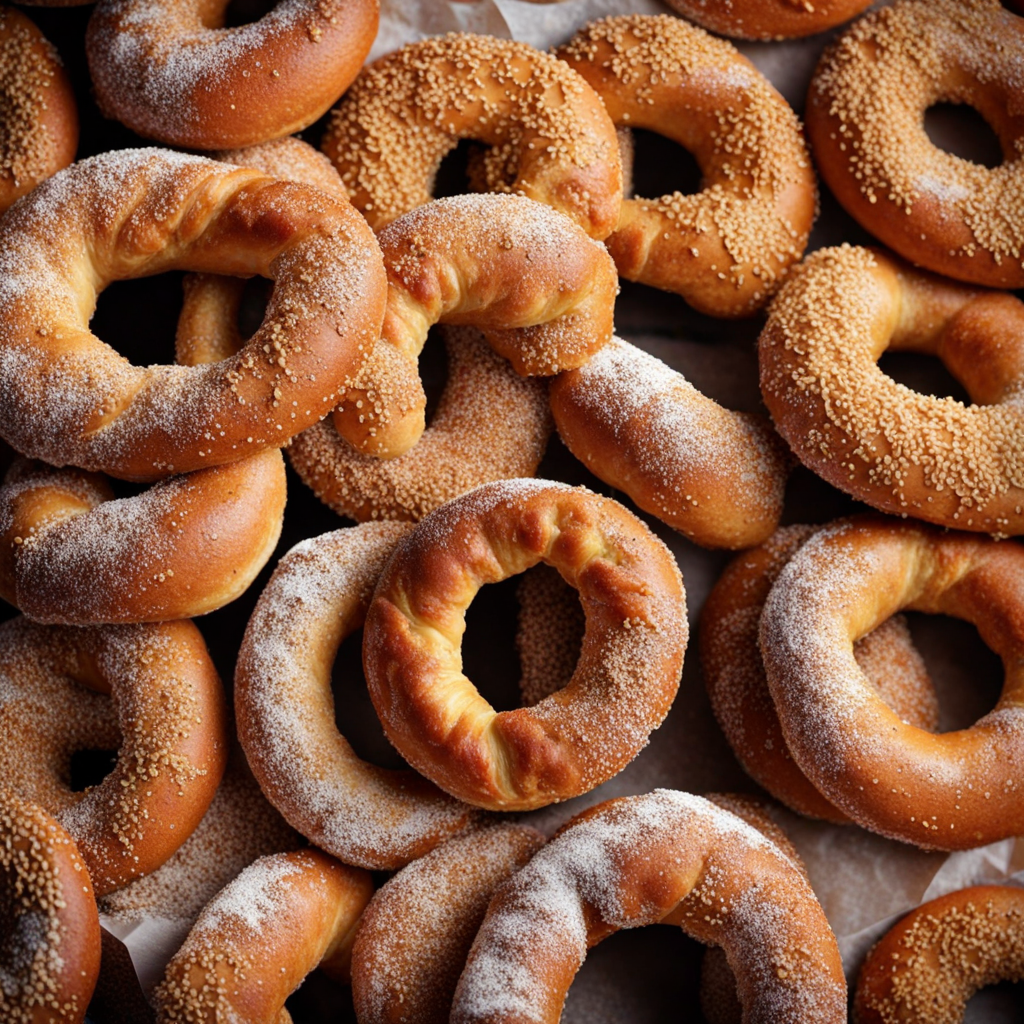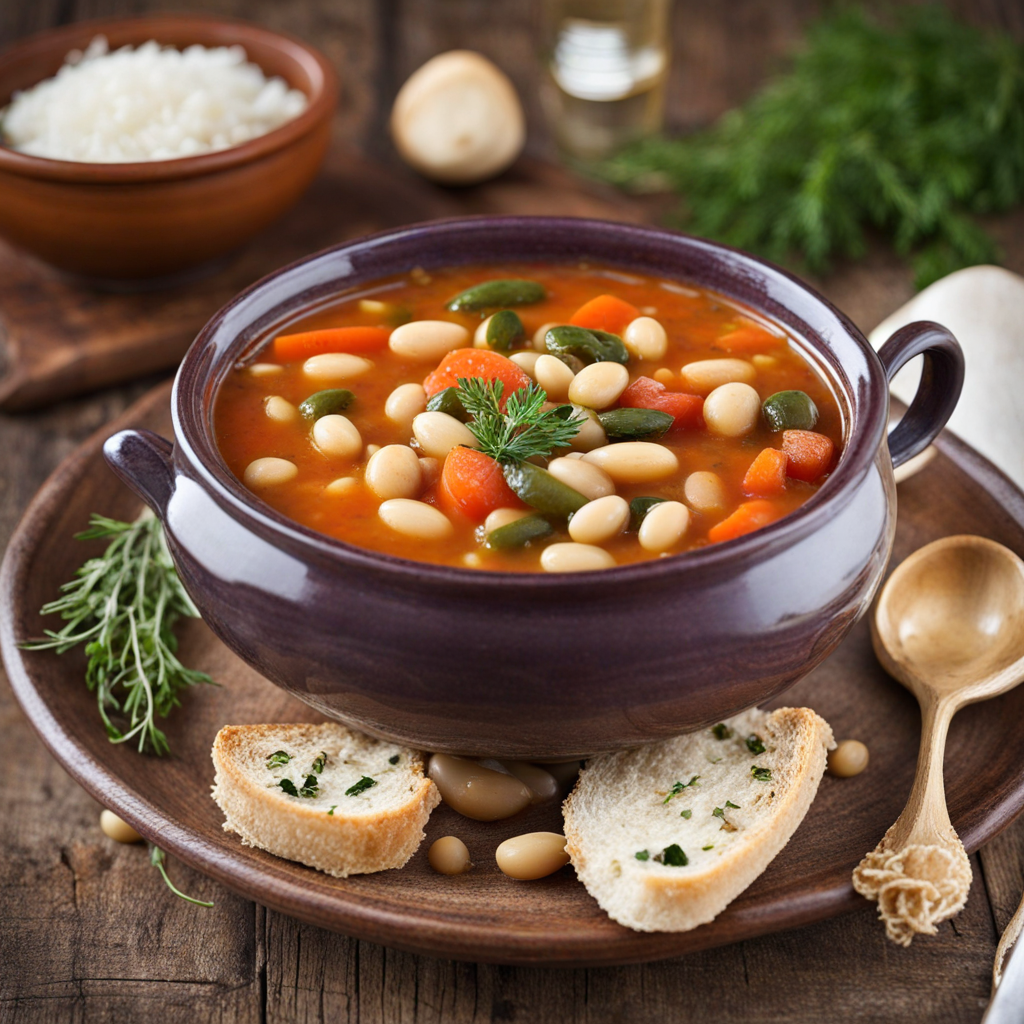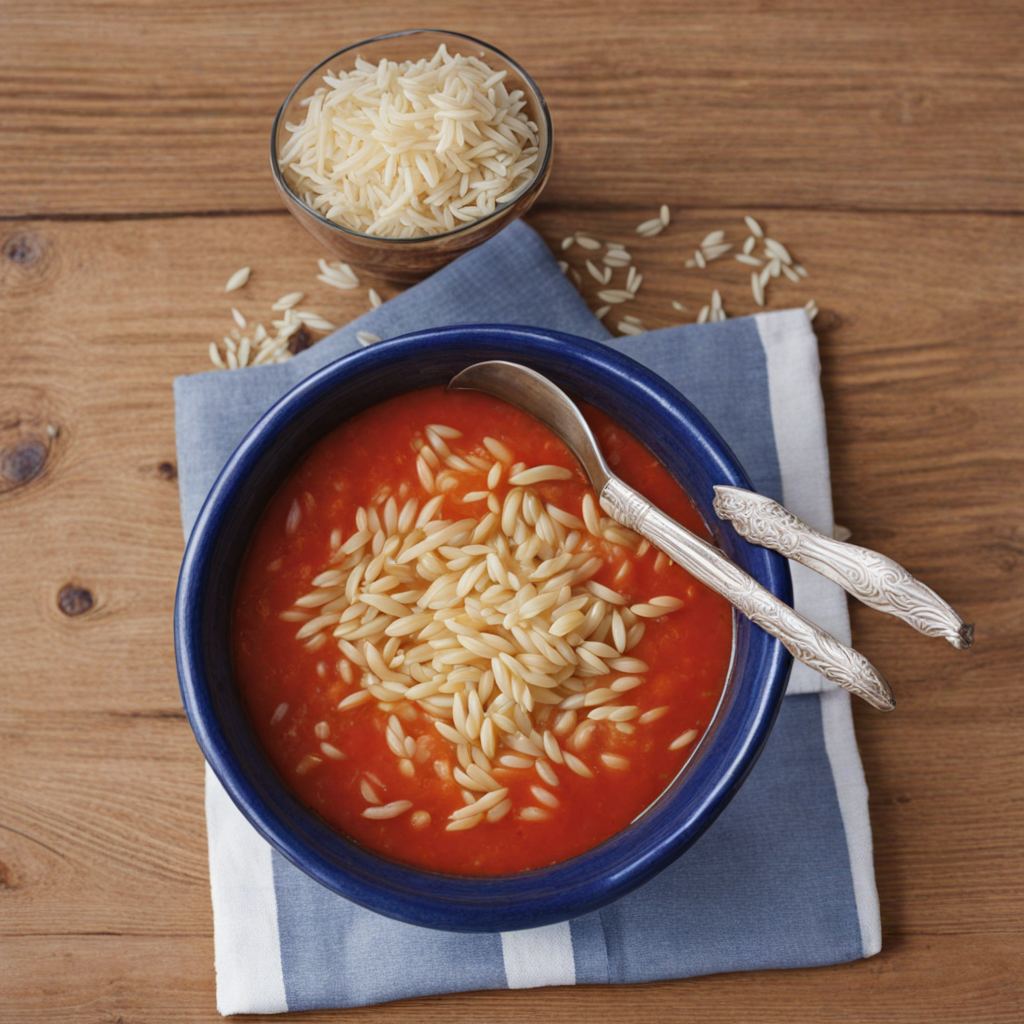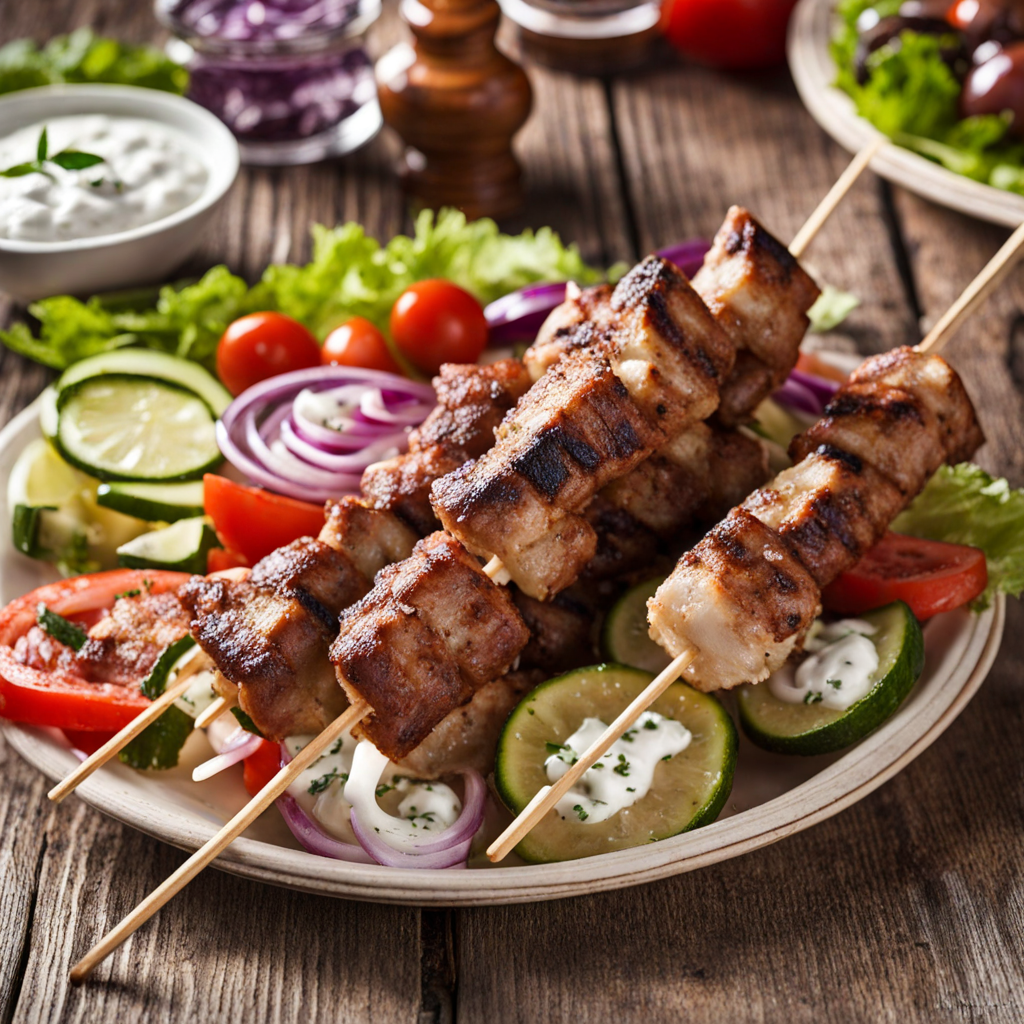Koulouri
Koulouri is a delightful Greek snack that captures the essence of Mediterranean flavors in its simple yet satisfying form. This circular bread, often resembling a large bagel, is made from a mixture of flour, water, yeast, and salt, giving it a wonderfully chewy texture. The dough is typically coated with sesame seeds, which not only adds a nutty flavor but also creates a beautiful golden-brown crust when baked. Koulouri is traditionally enjoyed fresh from street vendors or bakeries, making it a popular grab-and-go option for busy locals and tourists alike. The taste of Koulouri is a harmonious blend of subtle sweetness from the dough and a rich nuttiness from the toasted sesame seeds. As you take a bite, you'll experience the satisfying crunch of the crust followed by the soft, airy interior. It’s often enjoyed on its own, but many people like to pair it with a variety of toppings, such as creamy feta cheese, olives, or even a drizzle of honey for a sweet twist. This versatility allows Koulouri to be both a savory snack and a delightful breakfast item, catering to diverse palates. In addition to its delicious flavor, Koulouri also reflects the cultural heritage of Greece. It is commonly found at outdoor markets, where vendors call out to passersby, enticing them with the warm aroma of freshly baked bread. As you savor each bite of Koulouri, you not only indulge in a unique taste experience but also partake in a piece of Greek culinary tradition that has been cherished for generations. Whether enjoyed on its own or as part of a larger meal, Koulouri is a must-try for anyone looking to explore the rich flavors of Greek cuisine.
How It Became This Dish
Κουλούρι: A Taste of Greek Heritage #### Origins The history of Κουλούρι (pronounced kouloúri) can be traced back to ancient Greece, where bread and baked goods were staples of the Mediterranean diet. The very word "κουλούρι" refers to a type of bread that is typically circular in shape and often topped with sesame seeds. Its origins can be linked to the broader tradition of bread-making in Greece, which has been documented as far back as the 5th century BCE. Ancient Greeks had a profound appreciation for bread, producing various types using local grains, herbs, and seeds. While the precise origins of Κουλούρι are somewhat murky, it is widely believed that it emerged as a street food, particularly in urban areas like Athens and Thessaloniki, where vendors would sell it freshly baked to pedestrians. The circular shape of the bread, often with a hole in the center, made it easy to prepare, transport, and consume on the go, making it an ideal snack for the busy lives of city dwellers. #### Cultural Significance Κουλούρι is more than just a snack; it is a symbol of Greek culture and tradition. It embodies the spirit of communal life and the hustle and bustle of urban Greek society. Every morning in cities across Greece, the aroma of fresh Κουλούρι wafts through the streets, as local bakeries and street vendors begin their day. The act of buying a Κουλούρι from a street vendor is not merely a transaction; it is a ritual that connects people to their culinary heritage. In Greece, food is often intertwined with social practices, and Κουλούρι is no exception. It is a popular choice for breakfast, providing a quick and satisfying option for busy individuals. It is also enjoyed during festive occasions and family gatherings, where it is often served alongside other traditional foods. Its affordability and simplicity make it accessible to all layers of society, reinforcing its status as a beloved staple. The significance of Κουλούρι can also be seen in its representation in Greek literature and art. It has been mentioned in various works that highlight the everyday life of Greeks, often depicted in scenes that celebrate the joy of sharing food and experiences. This cultural resonance has helped to preserve its place in the hearts of many Greeks, both in Greece and among the diaspora. #### Development Over Time The development of Κουλούρι over the centuries reflects broader trends in Greek society and culinary practices. In ancient times, variations of round breads were common, but with the arrival of the Byzantine Empire, new ingredients and techniques influenced bread-making. The incorporation of spices and the use of enriched doughs began to appear, allowing for the evolution of baked goods, including Κουλούρι. The modern version of Κουλούρι as we know it today gained prominence in the late 19th and early 20th centuries, particularly as urbanization increased. The introduction of industrial baking techniques and the proliferation of bakeries in cities allowed for greater accessibility to this beloved bread. Street vendors selling Κουλούρι became ubiquitous, and the bread became synonymous with the vibrant street life of Athens and other urban centers. Traditionally, Κουλούρι is made from simple ingredients: flour, water, yeast, salt, and sesame seeds. The dough is formed into rings, boiled briefly in water (sometimes with a touch of honey or a baking soda solution), and then baked until golden brown. This method gives Κουλούρι its distinctive chewy texture and nutty flavor, making it a delightful snack or accompaniment to meals. In recent years, the popularity of Κουλούρι has transcended national borders, finding its way into the global culinary scene. Greek communities around the world have brought the tradition of Κουλούρι to countries like the United States, Canada, and Australia, where it is enjoyed by both Greeks and non-Greeks alike. Bakeries and cafes in these countries often feature Κουλούρι on their menus, sometimes introducing variations that incorporate modern flavors or ingredients, such as whole grains or seeds beyond sesame. Moreover, the rise of health consciousness among consumers has led to a renewed interest in traditional foods. As people seek out artisanal products and local ingredients, many bakers are returning to the roots of Κουλούρι, experimenting with organic flours and natural leavening agents, ensuring that the essence of this traditional bread remains intact while catering to contemporary palates. #### A Symbol of Resilience In addition to its culinary significance, Κουλούρι serves as a symbol of resilience and adaptability. Throughout Greece's tumultuous history, including periods of economic hardship and political strife, the simplicity and affordability of Κουλούρι have made it a reliable source of sustenance for many. During times of crisis, it has remained a comforting and familiar option for those seeking nourishment. The ongoing popularity of Κουλούρι also speaks to the broader theme of food as a connector of communities. In a world that is increasingly globalized, traditional foods like Κουλούρι remind individuals of their roots and heritage. For Greeks living abroad, enjoying a piece of Κουλούρι can evoke memories of home and familial gatherings, reinforcing their cultural identity. #### Conclusion In conclusion, Κουλούρι is not just a delicious bread; it is a rich tapestry woven into the fabric of Greek culture and history. From its ancient origins to its modern presence in both Greece and the diaspora, Κουλούρι stands as a testament to the enduring nature of traditional foods. It embodies the spirit of Greek hospitality, the joy of communal eating, and the resilience of a people who have, for centuries, found comfort and connection through the simple act of breaking bread. As we continue to embrace the diverse flavors of the world, let us not forget the humble Κουλούρι—a circular delight that encapsulates the heart and soul of Greece, inviting us all to savor a piece of its history.
You may like
Discover local flavors from Greece







